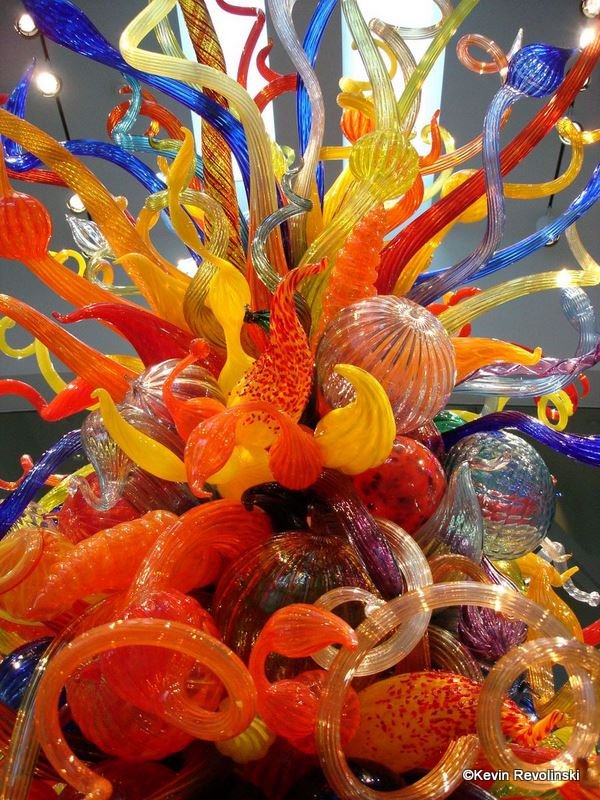War and Peace: Hiroshima’s Legacy
As I stand on the Aioi Bridge in Hiroshima, I look up at the cold gray sky. The rain and chilly temperatures have limited my choices for sightseeing but I’ve decided to visit a day when that sky was clear blue and warm, and just 600 meters above me a thousand suns were about to be unleashed and destroy nearly everything two kilometers in every direction.
Just off the bridge is the Atomic Bomb Dome, the remains of the Hiroshima Prefectural Commercial Exhibition Hall, one of the only buildings left standing in the hypocenter of the explosion. It is preserved as it survived and is a UNESCO World Heritage Site. The river splits south of here and on the delta in between is Hiroshima’s Peace Park and the Hiroshima Peace Memorial Museum.
Many have been moved to visit here from Pope John Paul II and Mother Theresa to the Dalai Lama and Vaclav Havel and it has become a symbol of a city that has long been associated with the destruction of war but which has made every effort to become an emblem of peace.
The museum contains the full story — Hiroshima’s origins and military buildup, the development of the bomb, the event and its aftermath, and then good information about nuclear proliferation and the efforts to stop it.
The first atomic bomb ever used in war detonated at 8:15 a.m. on August 6, 1945. By the end of that year, the blast and its radiation had claimed about 140,000 lives. Knowing the incredible amount of civilian casualties it was strange to read the dispassionate account of how the US military had compiled a list of potential target cities, pared it down and then spared them the carpet bombing so that when the big bomb came, there could be no mistaking what damage it caused.
Part of the exhibit is dedicated to the motivation for the bomb. Several factors are offered including the necessity to develop it before the Germans did. But the one that stands out also seems to be the most prominent along the walls and videos. When Soviet Russia agreed to declare war on Japan, there was concern that Russia’s role would grow the longer the war went on. The bomb could serve to end the war quickly and thus prevent the uneasily allied Russians from gaining a greater influence in the world.
Some museums of this nature really go into the graphic photos to hammer the point home and part of me feels that sometimes only encourages gawking, like the people who slow down to see “how bad was it?” at an accident site. I felt my knees go weak in Ho Chi Minh City at the War Remnants Museum as I was overwhelmed by horrifying photos of brutality and deformity. In Hiroshima there are a few photos of burn victims, scarring, and radiation-related disease, but just enough to instruct not to exploit. For the most part surviving objects and text tell the stories.
And the stories which are most heart wrenching are those of the children. Over 6,000 people lived on the delta when the bomb went off, but thousands of children had been moved in to help clear fire lanes in the case of incendiary bomb attacks. They were there on August 6, 1945. Tiny artifacts given to the museum by their parents were all that they were able to recover from the remains of the city after the blast and the raging fires. The individual stories are told next to each object. Putting names to victims provides that human connection which often is lost when confronted with a number such as 140,000. Some children were burned horribly by the heat rays yet still managed to walk home to their parents where they died shortly thereafter. It was quite an emotional collection and more than a few people left sniffing back tears. When you see one tiny shoe with the child’s footprint still in it, it’s hard.
Sadako Sasaki was two years old when she survived the blast, but ten years later she developed leukemia. Her eight-month battle with painful cancer is documented as well. Her method of coping was origami. She was told if she folded 1000 cranes she might be granted a wish. Her cranes numbered more than that and children sent her their own in support. After her death her classmates helped create the Children’s Peace Monument and each year people from around the world send paper cranes here. Her cranes and her story are also on display.
Upon completing the tour of the museum I paused to look at other visitor comments and stare out the window toward the eternal flame over a reflecting pool. Appropriately a group of school children in their blue and white uniforms traversed the grounds heading north. Hiroshima has the misfortune of having been the first place a nuclear weapon was used in war. And despite the vileness of the whole thing, the shock of the museum and the aftermath of the detonation, it troubled me to know there is yet another city with this devastating story, museum, and heartbreak.
What I appreciate about this museum is that it is a Peace Museum. It doesn’t sensationalize or apologize. It doesn’t attack the US, nor does it forget Japan’s militaristic past. (There is even acknowledgement of the massacre of Chinese civilians at Nanking at the hands of Japanese soldiers.) It just walks the visitor through the horrific indiscriminate power of a nuclear weapon on a civilian population. It makes a heartfelt plea for peace and an end to the threat of nuclear war. Over the years the various mayors of Hiroshima have sent personal letters every time a nation tests a nuclear weapon expressing their dismay and imploring world leaders to desist. A clock in the museum lobby shows how many days it has been since August 6, 1945 and the number of days since the last nuclear test. The hope is that some day that date too will be permanent.
Where’d I stay in Hiroshima? Dormy Inn, cheap, clean, free internet, and a hot bath – just a couple blocks from the Peace Park.
Believe it or not, writers were barred from writing about the events at Hiroshima for several years after the event.




 ORDER YOUR COPY TODAY!
ORDER YOUR COPY TODAY! ORDER YOUR COPY TODAY!
ORDER YOUR COPY TODAY!
Great story!
I imagine that visiting this museum leaves a lingering emotional feeling that is difficult to shake. I will certainly look into visiting the museum on our next trip to Japan.
Anything like this is always deeply troubling, but when kids are a focus it's harder still. Tuol Sleng Genocide Museum in Phnom Penh (www.themadtraveleronline.com/s21museum.htm) was really tough. But this one also leaves one with a call to action whereas some others only leave you shaking your head.
I'm actually quite surprised that the Peace Museum in Japan mentions the Rape of Nanjing. There has been protests ever since the event denying the raping and pillaging of the villages and cities in China, even till today. Many Japanese believe they're myths created to push Chinese propaganda. The government has also denied these events and refuse to admit to their war crimes.
Monica, Yeah, that was a surprise knowing what I know from your blog on that subject (http://apairofpantiesandboxers.wordpress.com/2009/09/16/the-rape-of-nanjing) But I suppose it had to be said to legitimize the mission of Peace. How could a museum working for peace get anywhere toward it while denying various crimes against humanity? Even the mere mention of the "possibility" that it was as high as the Chinese estimate really struck me. A glimmer of hope. Mission accomplished. Next Tuesday I'll see Nanjing's memorial. Bracing myself for it.
A very touching article. Once again I ask myself, why will humans never learn and stop wars, period?
Pingback: 2010 Reading in Review: Book Recommendations
Pingback: Japan, Radiation and Poor Taste: When to Panic?
Pingback: My 7 Links: Best of the Mad Traveler